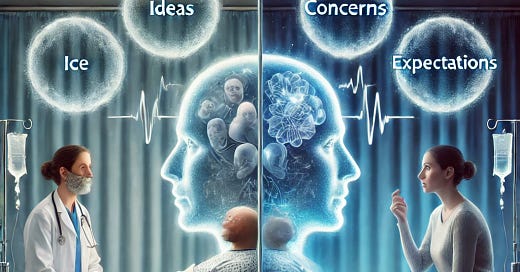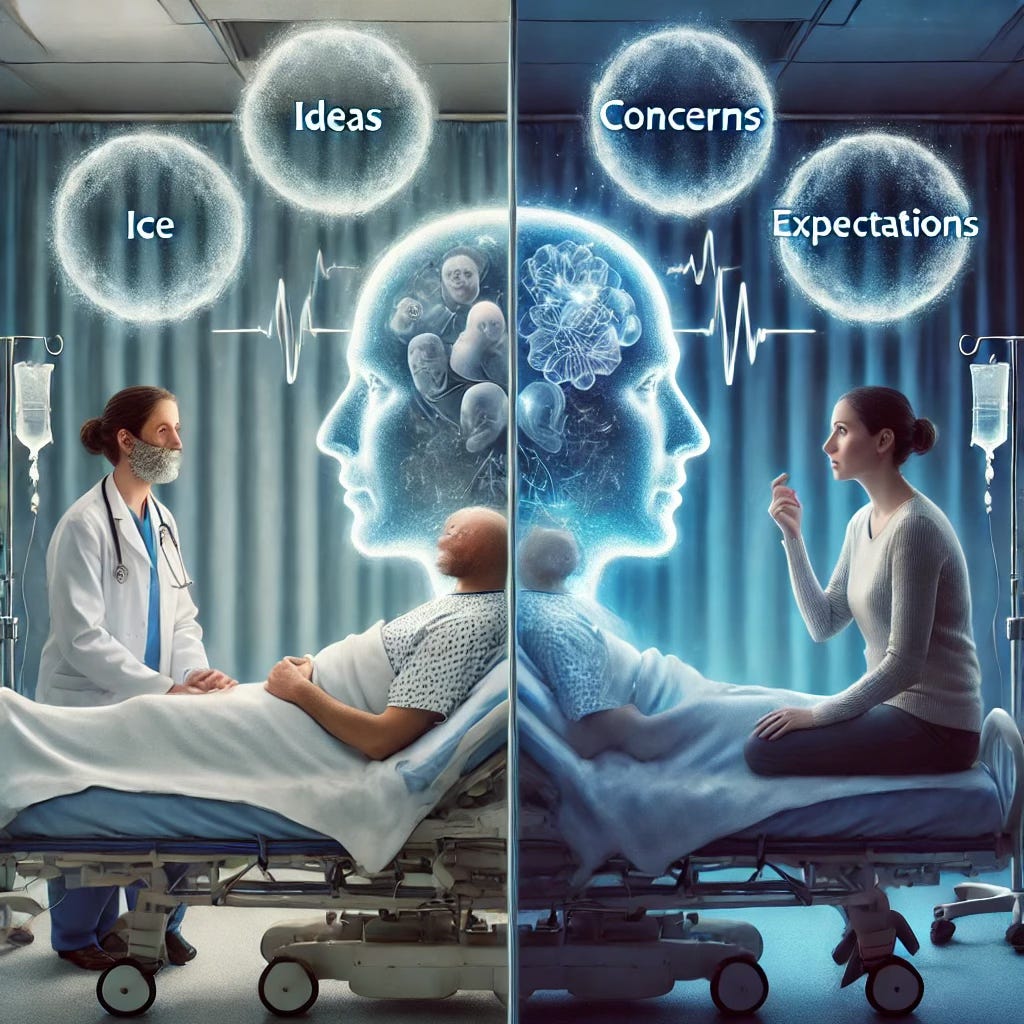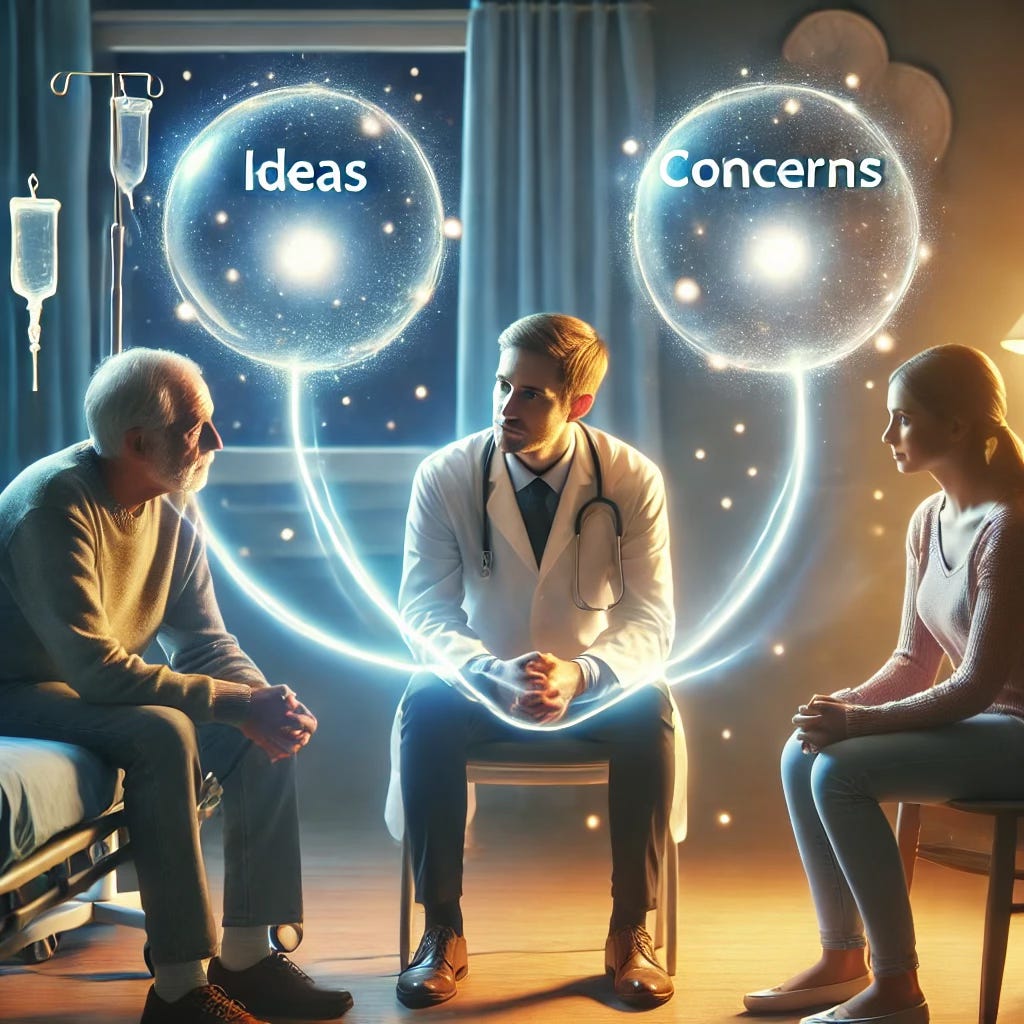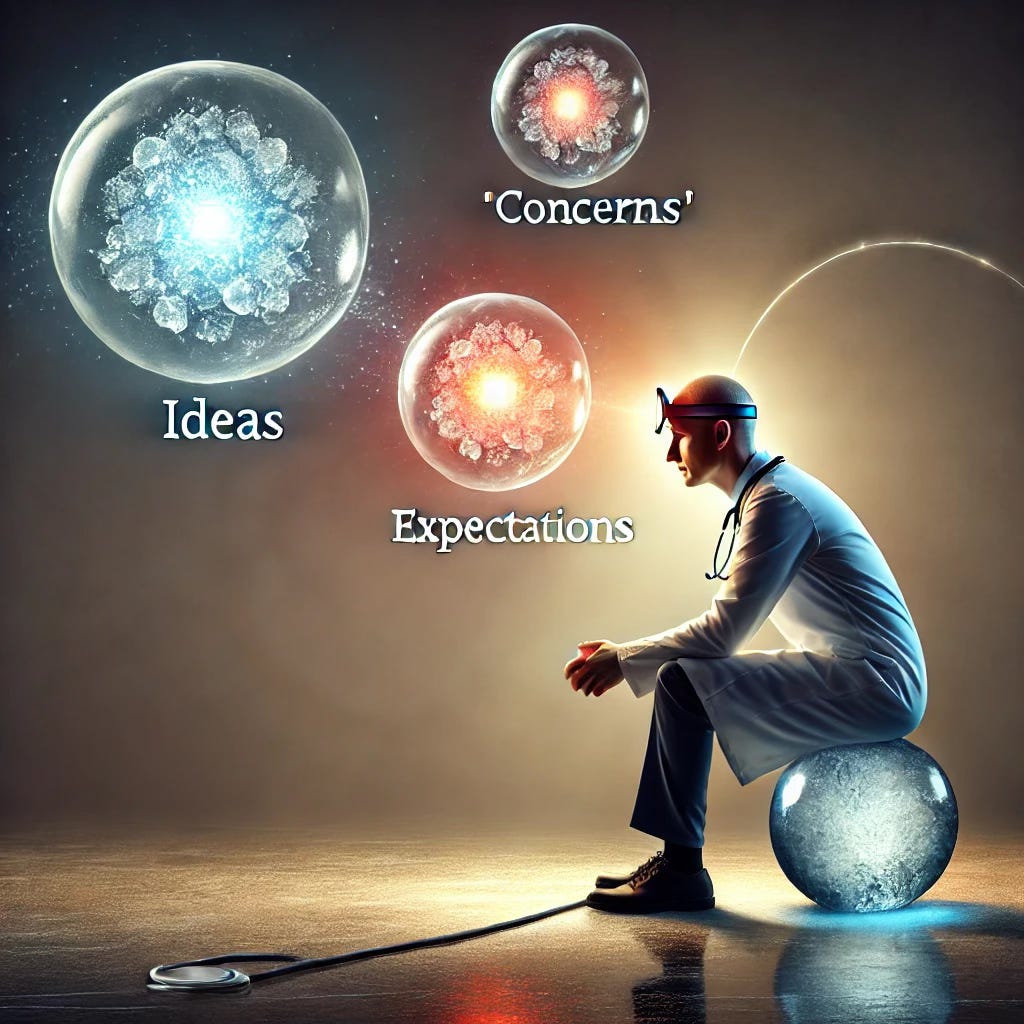In the fast-paced, life-or-death environment of the ICU, words hold immense power. But it took a simple technique I learned during my MRCP PACES preparation to truly understand that communication is not just about speaking—it’s about listening. And this lesson transformed the way I approach not only patients and families, but also the way I talk to myself during moments of stress and burnout.
Before ICE: The Struggle with Communication in the ICU
In the ICU, where emotions run high and every second counts, communication isn’t just important—it’s everything. I used to think that by simplifying medical terms and offering detailed explanations, I was doing my job well. I’d sit with families, lay out all the facts, and expect that they would walk away with a clear understanding of their loved one’s condition. But despite my efforts, I often found them returning—sometimes with more family members—asking the same questions.
What I failed to realize back then was that communication isn’t just about the information we deliver; it’s about connection. My approach, though well-intentioned, lacked a crucial component: truly understanding what the patient’s family needed to hear. This disconnect didn’t just drain my energy; it also added frustration, especially in an already overloaded ICU environment. I had all the medical knowledge, but something was missing.
That’s when I learned about the ICE technique.
The ICE Technique: Ideas, Concerns, Expectations
During my preparation for the MRCP PACES, I was introduced to the ICE technique, which stands for Ideas, Concerns, and Expectations. At its core, this technique is about slowing down, sitting with the patient or their family, and inviting them into a conversation where they feel heard. Rather than jumping into explanations, the ICE technique starts with a question: “What do you already know?”
It was a game-changer. By asking families what they already understood about the patient’s condition, I could tailor my explanations to fill in the gaps, rather than overwhelming them with more information than they needed. It saved both time and energy, but more importantly, it built trust. They felt acknowledged, and I no longer had to repeat the same conversations.
Next came the step that I found most challenging: listening to their **concerns**. In the chaos of the ICU, where every second is valuable, it’s tempting to rush through conversations. But I learned that until I addressed their core concerns—whether it was about long-term recovery, potential side effects, or even social obligations like how long they’d need to stay in the hospital—no amount of medical explanation would suffice. When their concerns were heard, they could focus on what I was actually saying.
Finally, I asked about their expectations. And this is where the conversations got real. For one family, their expectation was that their father, who had stage 4 relapsed RCC, would survive just long enough to attend his daughter’s wedding. It wasn’t a promise I could make. But by acknowledging their hope and gently explaining what we could realistically expect, they were able to accept the difficult reality of end-of-life care without feeling blindsided. Listening to their expectations made it possible to have a deeper, more honest conversation.
Turning the Technique Inward: The Inner Dialogue
The real transformation came when I started applying the ICE technique to my own inner dialogue. In medicine, we face stress, burnout, and moments of emotional turmoil. It’s easy to get caught up in the noise of negative self-talk, doubts, and expectations from others.
In those moments, I found myself turning to the same technique. When I felt overwhelmed, I asked myself: What are the ideas driving this stress? Often, I realized that outdated beliefs or conditioning from past experiences were the root cause. Then I explored my concerns: What am I really worried about here?Fear of failure? Fear of judgment? By acknowledging these, I could finally start addressing the real issues.
Lastly, I looked at my expectations. Too often, we are weighed down by the expectations of society, family, or even the unrealistic goals we set for ourselves. But by identifying and acknowledging them, I was able to find balance and peace.
The Power of Listening to Yourself
Communication isn’t just about the words we say to others; it’s also about the words we say to ourselves. The ICE technique helped me realize that listening is the key—whether it’s with a patient’s family or with our own inner voice. Just as we need to give space to others to express their concerns and expectations, we need to give ourselves that same space for introspection.
In moments of self-doubt or emotional struggle, I encourage you to ask yourself:
- What ideas or beliefs are driving my current mindset?
- What are my real concerns, and what am I afraid of?
- What expectations am I holding onto, and are they serving me?
By taking the time to acknowledge these aspects of your inner dialogue, you’ll find clarity and peace—just as I did in those difficult conversations in the ICU.
Communication is an art. It’s not just about conveying facts; it’s about understanding emotions, expectations, and concerns—whether they belong to others or to ourselves. Next time you’re faced with a difficult conversation, whether with someone else or within your own mind, remember the power of the ICE technique. Take the time to ask, to listen, and to respond with compassion.
Stay balanced, stay healthy, and remember—communication starts with listening.
Dr.Krishna Bharath,MD.



















Share this post